Sticky Postings
All 242 fabric | rblg updated tags | #fabric|ch #wandering #reading
By fabric | ch
-----
As we continue to lack a decent search engine on this blog and as we don't use a "tag cloud" ... This post could help navigate through the updated content on | rblg (as of 09.2023), via all its tags!
FIND BELOW ALL THE TAGS THAT CAN BE USED TO NAVIGATE IN THE CONTENTS OF | RBLG BLOG:
(to be seen just below if you're navigating on the blog's html pages or here for rss readers)
--
Note that we had to hit the "pause" button on our reblogging activities a while ago (mainly because we ran out of time, but also because we received complaints from a major image stock company about some images that were displayed on | rblg, an activity that we felt was still "fair use" - we've never made any money or advertised on this site).
Nevertheless, we continue to publish from time to time information on the activities of fabric | ch, or content directly related to its work (documentation).
Wednesday, April 18. 2018
A Turing Machine Handmade Out of Wood | #history #computing #openculture
Note: Turing Machines are now undoubtedly part of pop culture, aren't they?
Via Open Culture (via Boing Boing)
-----
It took Richard Ridel six months of tinkering in his workshop to create this contraption--a mechanical Turing machine made out of wood. The silent video above shows how the machine works. But if you're left hanging, wanting to know more, I'd recommend reading Ridel's fifteen page paper where he carefully documents why he built the wooden Turing machine, and what pieces and steps went into the construction.
If this video prompts you to ask, what exactly is a Turing Machine?, also consider adding this short primer by philosopher Mark Jago to your media diet.
Related Content:
Free Online Computer Science Courses
The Books on Young Alan Turing’s Reading List: From Lewis Carroll to Modern Chromatics
The LEGO Turing Machine Gives a Quick Primer on How Your Computer Works
The Enigma Machine: How Alan Turing Helped Break the Unbreakable Nazi Code
Monday, November 23. 2015
The Information Age Is Over. Welcome to the Infrastructure Age | #infrastructure
Note: this article was published a while ago and was rebloged here and there already. I kept it in my pile of "interesting articles to read later when I'll have time" for a long time as well therefore. But it make sense to post it in conjunction with the previous one about Norman Foster and by extension with the otehr one concerning the Chicago Biennial.
It is also sometimes interesting to read posts with delay, when the hype and buzzwords are gone. Written in the aftermath of the Tesla annoncement about its home battery (Powerwall), the article was all about energy revolution. But since then, what? We're definitely looking forward...
Via Gizmodo
-----

Photo: SpaceX
Nobody wants to say it outright, but the Apple Watch sucks. So do most smartwatches. Every time I use my beautiful Moto 360, its lack of functionality makes me despair. But the problem isn’t our gadgets. It’s that the future of consumer tech isn’t going to come from information devices. It’s going to come from infrastructure.
That’s why Elon Musk’s announcements of the new Tesla battery line last night were more revolutionary than Apple Watch and more exciting than Microsoft’s admittedly nifty HoloLens. Information tech isn’t dead — it has just matured to the point where all we’ll get are better iterations of the same thing. Better cameras and apps for our phones. VR that actually works. But these are not revolutionary gadgets. They are just realizations of dreams that began in the 1980s, when the information revolution transformed the consumer electronics market.
But now we’re entering the age of infrastructure gadgets. Thanks to devices like Tesla’s household battery, Powerwall, electrical grid technology that was once hidden behind massive barbed wire fences, owned by municipalities and counties, is now seeping slowly into our homes. And this isn’t just about alternative energy like solar. It’s about how we conceive of what technology is. It’s about what kinds of gadgets we’ll be buying for ourselves in 20 years.
It’s about how the kids of tomorrow won’t freak out over terabytes of storage. They’ll freak out over kilowatt-hours.
Beyond transforming our relationship to energy, though, the infrastructure age is about where we expect computers to live. The so-called internet of things is a big part of this. Our computers aren’t living in isolated boxes on our desktops, and they aren’t going to be inside our phones either. The apps in your phone won’t always suck you into virtual worlds, where you can escape to build treehouses and tunnels in Minecraft. Instead, they will control your home, your transit, and even your body.
Once you accept that the thing our ancestors called the information superhighway will actually be controlling cars on real-life highways, you start to appreciate the sea change we’re witnessing. The internet isn’t that thing in there, inside your little glowing box. It’s in your washing machine, kitchen appliances, pet feeder, your internal organs, your car, your streets, the very walls of your house. You use your wearable to interface with the world out there.
It makes perfect sense to me that a company like Tesla could be at the heart of the new infrastructure age. Musk’s focus has always been relentlessly about remolding the physical world, changing the way we power our transit — and, with SpaceX, where future generations might live beyond Earth. The opposite of cyberspace is, well, physical space. And that’s where Tesla is taking us.
But in the infrastructure age, physical space has been irrevocably transformed by cyberspace. Now we use computers to experience the world in ways we never could before computer networks and data analysis, using distributed sensor devices over fault lines to give people early warnings about earthquakes that are rippling beneath the ground — and using satellites like NASA’s SMAP to predict droughts years before they happen.
Of course, there are the inevitable dangers that come with infusing physical space with all the vulnerabilities of cyberspace. People will hack your house; they’ll inject malicious code into delivery drones; stealing your phone might become the same thing as stealing your car. We’ll still be mining unsustainably to support our glorious batteries and photovoltaics and smart dance clubs.
But we will also benefit enormously from personalizing the energy grid, creating a battery-powered hearth for every home. Plus the infrastructure age leads directly into outer space, to tackle big problems of human survival, and diverts our impoverished attention spans from gazing neurotically at the social scene unfolding in tiny glowing rectangles on our wrists.
The information age brought us together, for better or worse. It allowed us to understand our environment and our bodies in ways we never could before. But the infrastructure age is what will prevent us from killing ourselves as we grow up into a truly global civilization. That is far more important, and exciting, than any gold watch could ever be.
Friday, October 17. 2014
“Hello, Computer” – Intel’s New Mobile Chips Are Always Listening | #monitoring #always
Note: are we all on our way, not to LA, but to HER... ?
-----
Tablets and laptops coming later this year will be able to constantly listen for voice commands thanks to new chips from Intel.
By Tom Simonite

New processors: A silicon wafer etched with Intel’s Core M mobile chips.
A new line of mobile chips unveiled by Intel today makes it possible to wake up a laptop or tablet simply by saying “Hello, computer.” Once it has been awoken, the computer can operate as a voice-controlled virtual assistant. You might call out “Hello, computer, what is the weather forecast today?” while getting out of bed.
Tablets and lightweight laptops based on the new Core M line of chips will go on sale at the end of this year. They can constantly listen for voice instructions thanks to a component known as a digital signal processor core that’s dedicated to processing audio with high efficiency and minimal power use.
“It doesn’t matter what state the system will be in, it will be listening all the time,” says Ed Gamsaragan, an engineer at Intel. “You could be actively doing work or it could be in standby.”
It is possible to set any two- or three-word phrase to rouse a computer with a Core M chip. A device can also be trained to respond only to a specific voice. The voice-print feature isn’t accurate enough to replace a password, but it could prevent a device from being accidentally woken up, says Gamsaragan. If coupled with another biometric measure, such as webcam with facial recognition, however, a voice command could work as a security mechanism, he says.
Manufacturers will decide how to implement the voice features in Intel’s Core M chips in devices that will appear on shelves later this year.
The wake-on-voice feature is compatible with any operating system. That means it could be possible to summon Microsoft’s virtual assistant Cortana in Windows, or Google’s voice search functions in Chromebook devices.
The only mobile device on the market today that can constantly listen for commands is the Moto X smartphone from Motorola (see “The Era of Ubiquitous Listening Dawns”). It has a dedicated audio chip that constantly listens for the command “OK, Google,” which activates the Google search app.
Intel’s Core M chips are based on the company’s new generation of smaller transistors, with features as small as 14 nanometers. This new architecture makes chips more power efficient and cooler than earlier generations, so Core M devices don’t require cooling fans.
Intel says that the 14-nanometer architecture will make it possible to make laptops and tablets much thinner than they are today. This summer the company showed off a prototype laptop that is only 7.2 millimeters (0.28 inches) thick. That’s slightly thinner than Apple’s iPad Air, which is 7.5 millimeters thick, but Intel’s prototype packed considerably more computing power.
Monday, July 14. 2014
Apple's lost future: phone, tablet, and laptop prototypes of the ’80s | #design #curiosities
Note: it looks like many products we are using today were envisioned a long time ago (peak of expectations vs plateau)... back in the early years of personal computing (80ies). It funnily almost look like a lost utopian-future. Now that we are moving from personal computing to (personal) cloud computing (where personal must be framed into brackets, but should necessarily be a goal), we can possibly see how far personal computing was a utopian move rooted into the protest and experimental ideologies of the late 60ies and 70ies. So was the Internet in the mid 90ies. And now, what?
Via The Verge
-----
By Jacob Kastrenakes

Apple's focus on design has long been one of the key factors that set its computers apart. Some of its earliest and most iconic designs, however, didn't actually come from inside of Apple, but from outside designers at Frog. In particular, credit goes to Frog's founder, Hartmut Esslinger, who was responsible for the "Snow White" design language that had Apple computers of the ’80s colored all white and covered in long stripes and rounded corners meant to make the machines appear smaller.
In fact, Esslinger goes so far as to say in his recent book, Keep it Simple, that he was the one who taught Steve Jobs to put design first. First published late last year, the book recounts Esslinger's famous collaboration with Jobs, and it includes amazing photos of some of the many, many prototypes to come out of it. They're incredibly wide ranging, from familiar-looking computers to bizarre tablets to an early phone and even a watch, of sorts.
This is far from the first time that Esslinger has shared early concepts from Apple, but these show not only a variety of styles for computers but also a variety of forms for them. Some of the mockups still look sleek and stylish today, but few resemble the reality of the tablets, laptops, and phones that Apple would actually come to make two decades later, after Jobs' return. You can see more than a dozen of these early concepts below, and even more are on display in Esslinger's book.
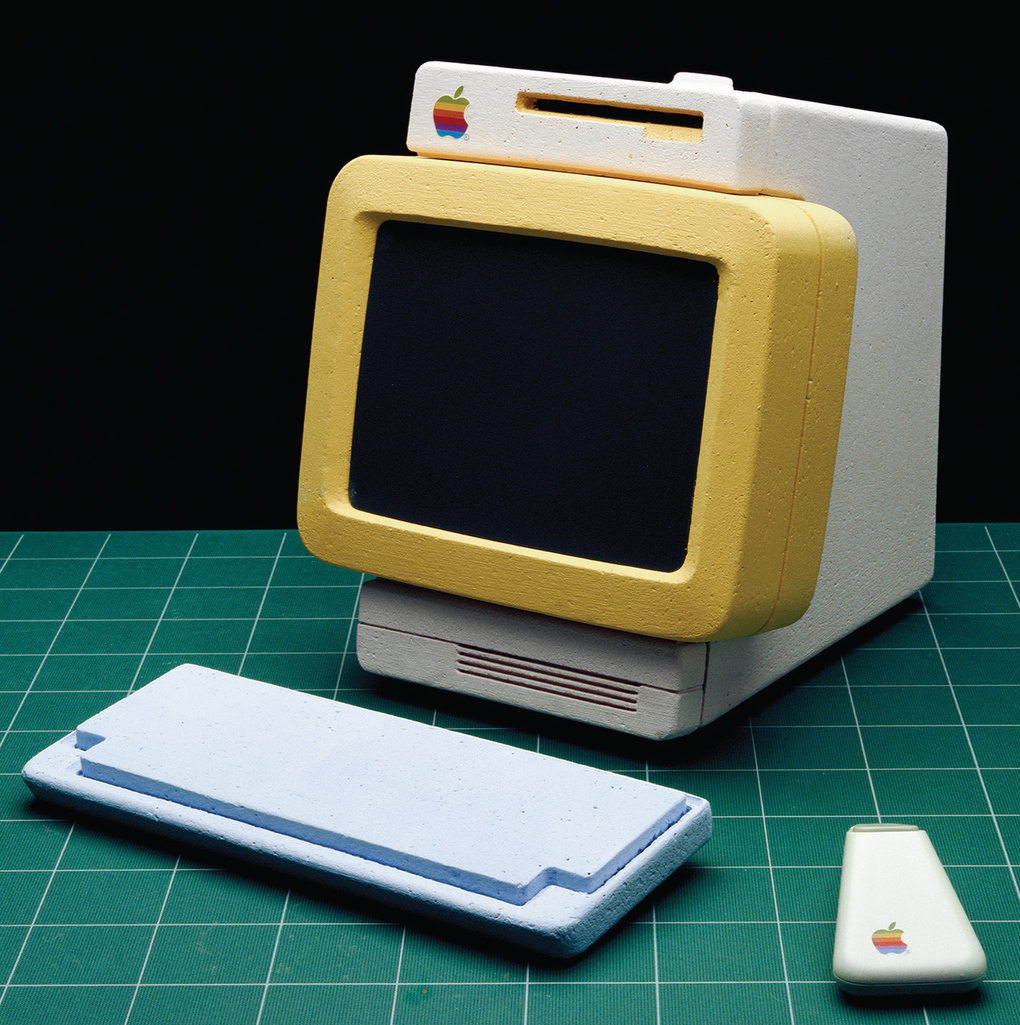

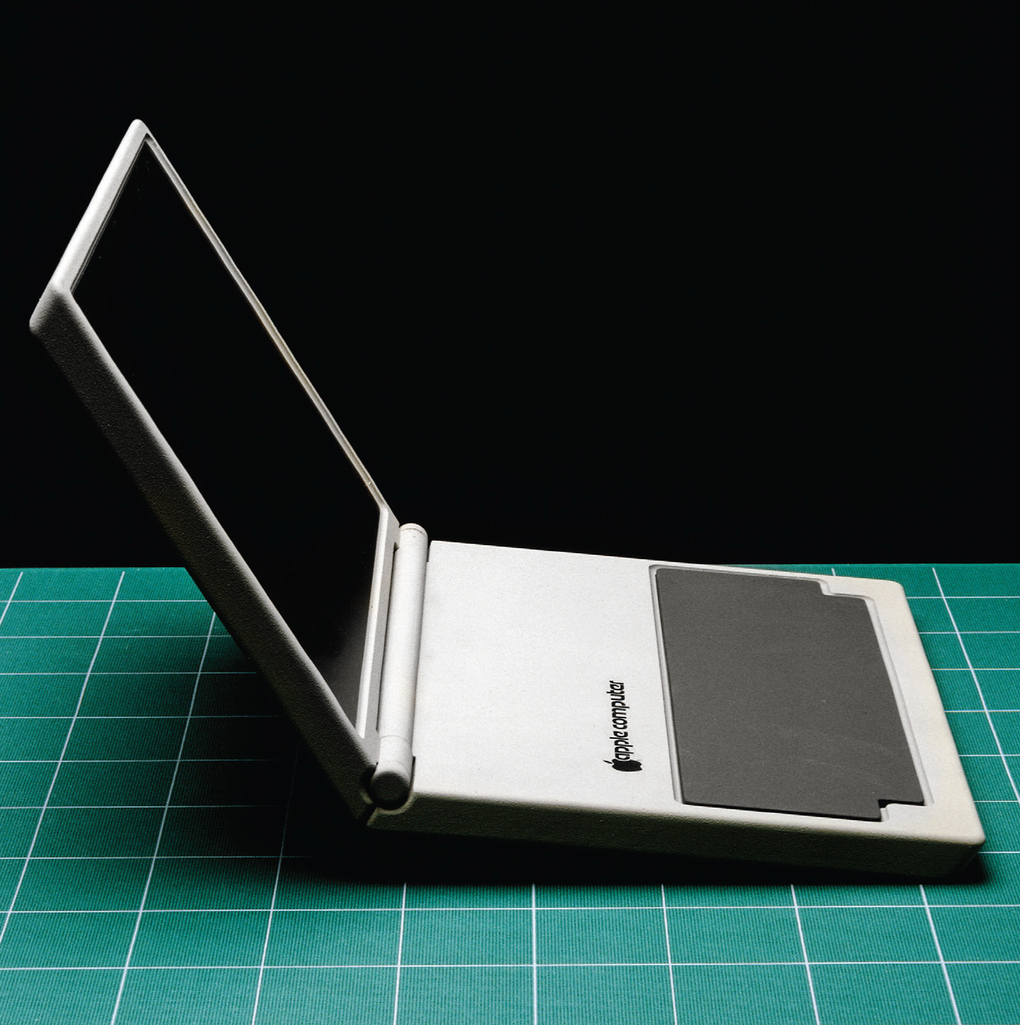

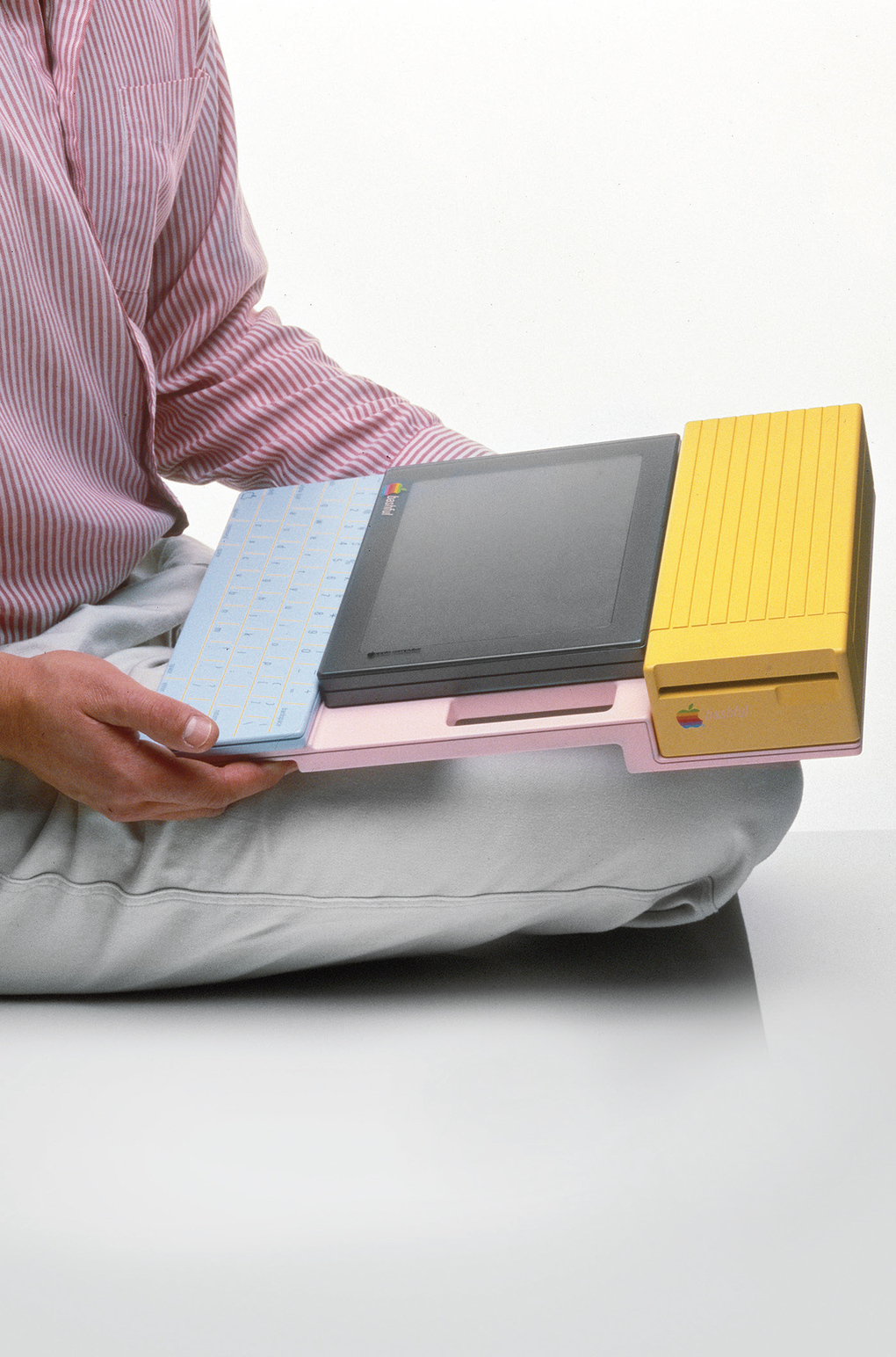
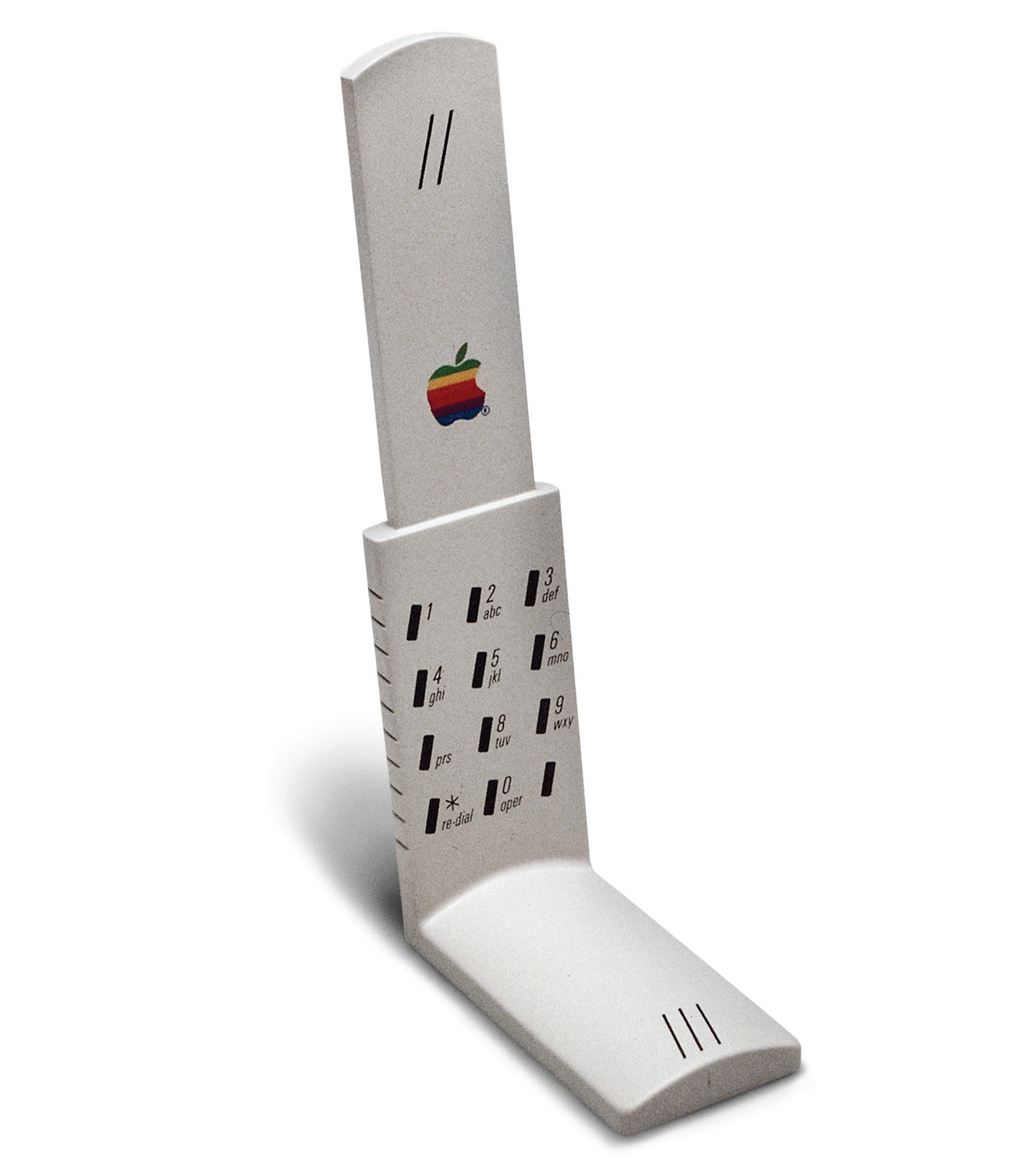

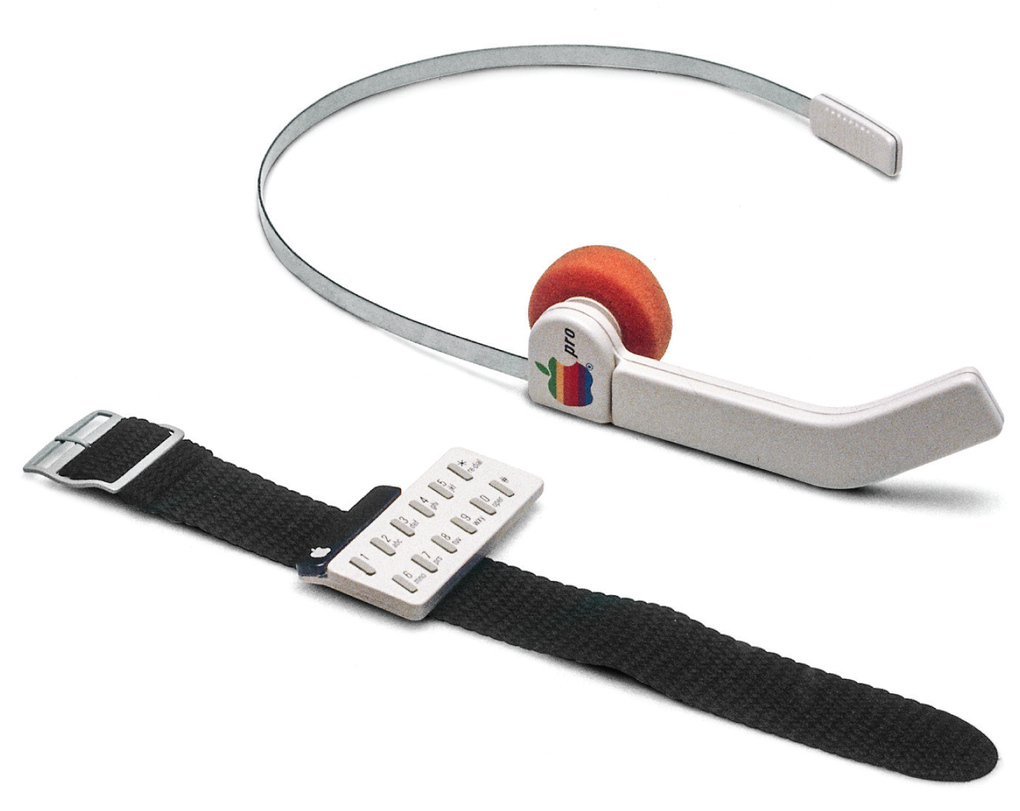
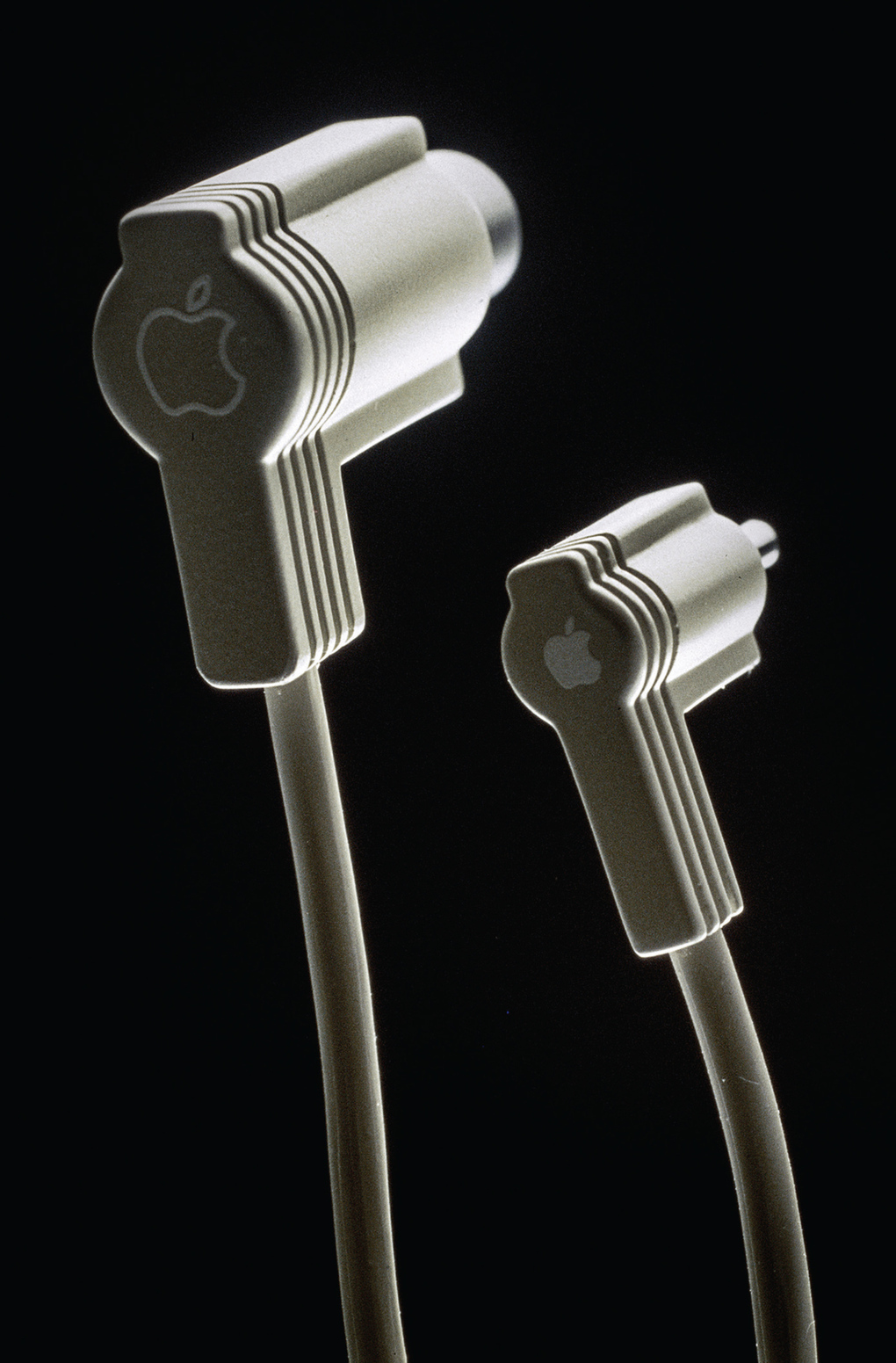
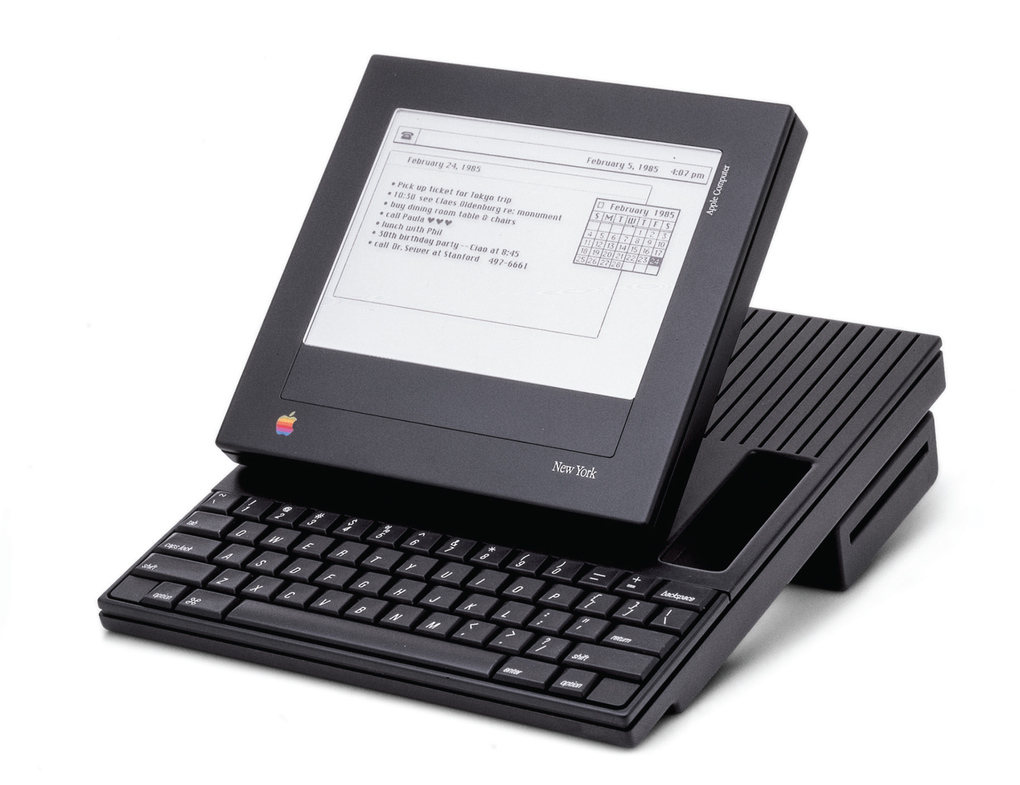

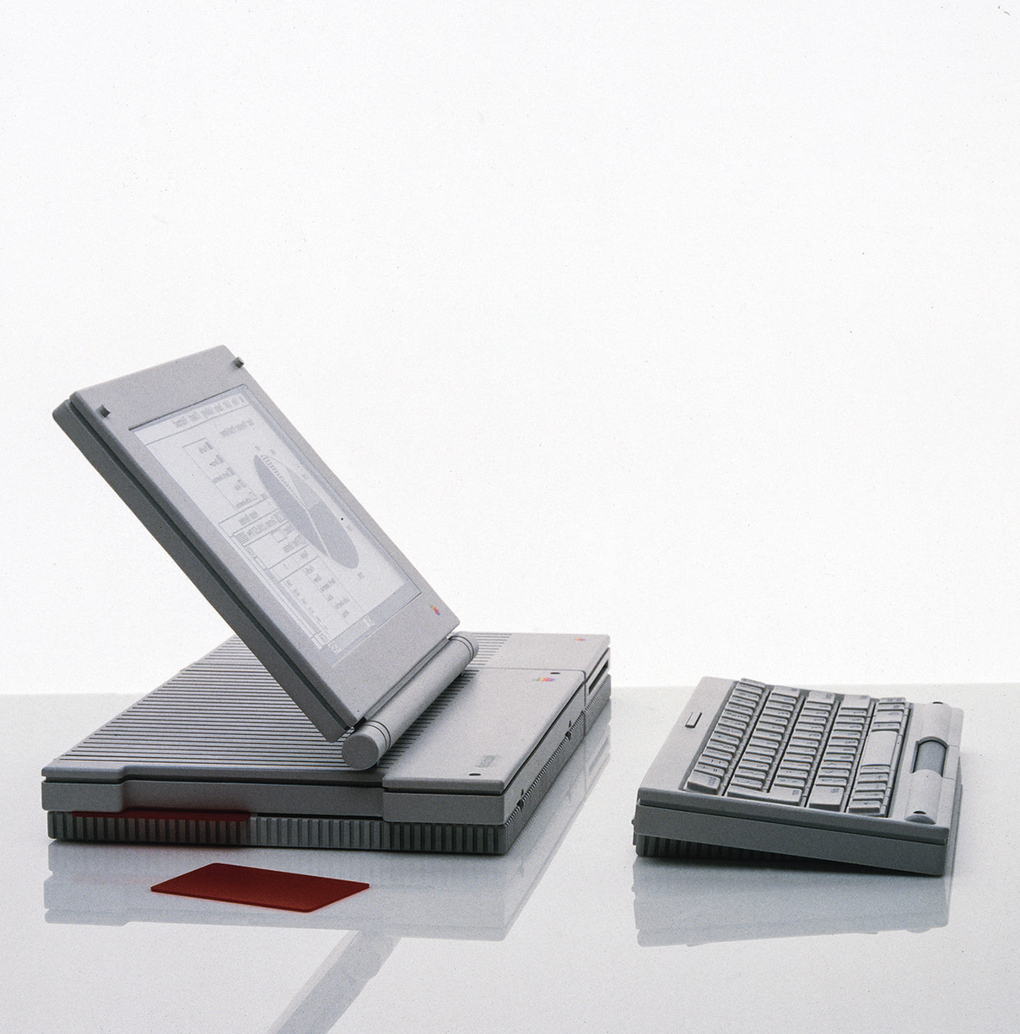
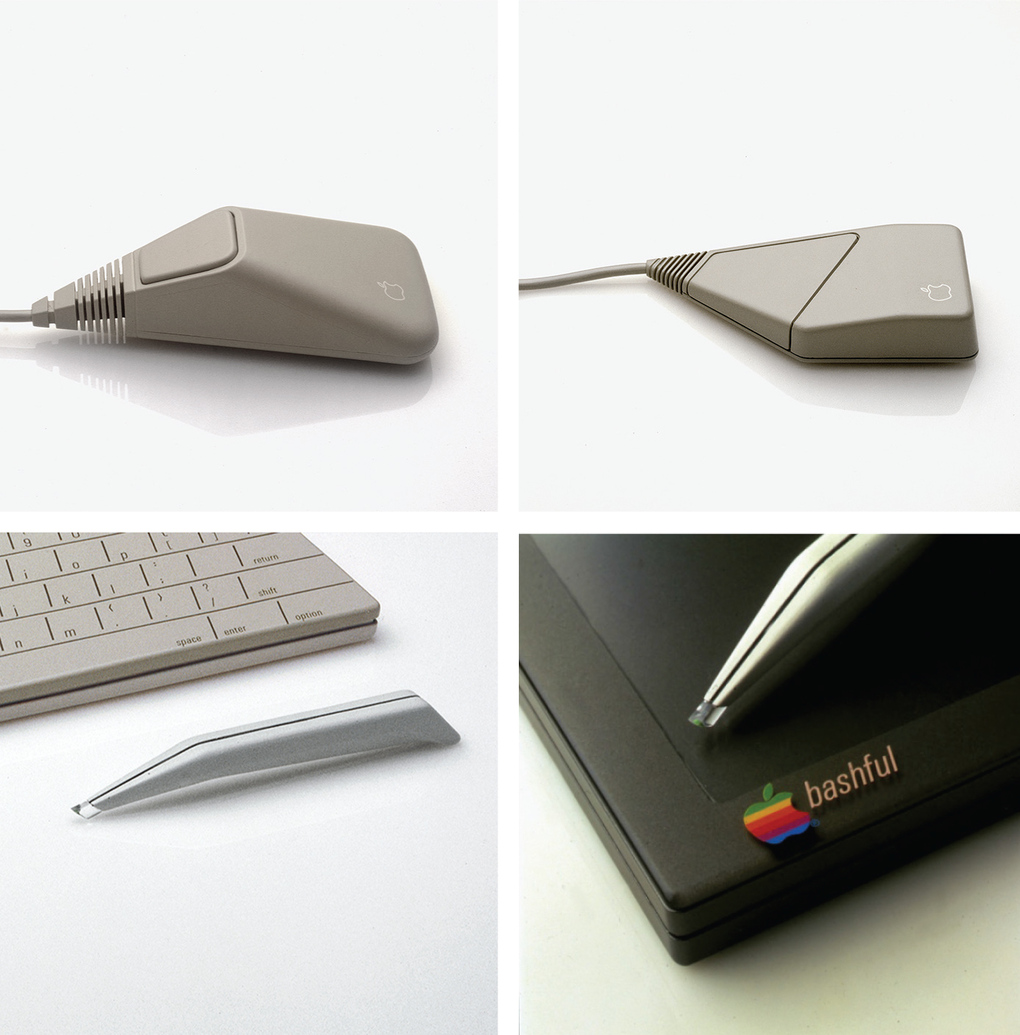

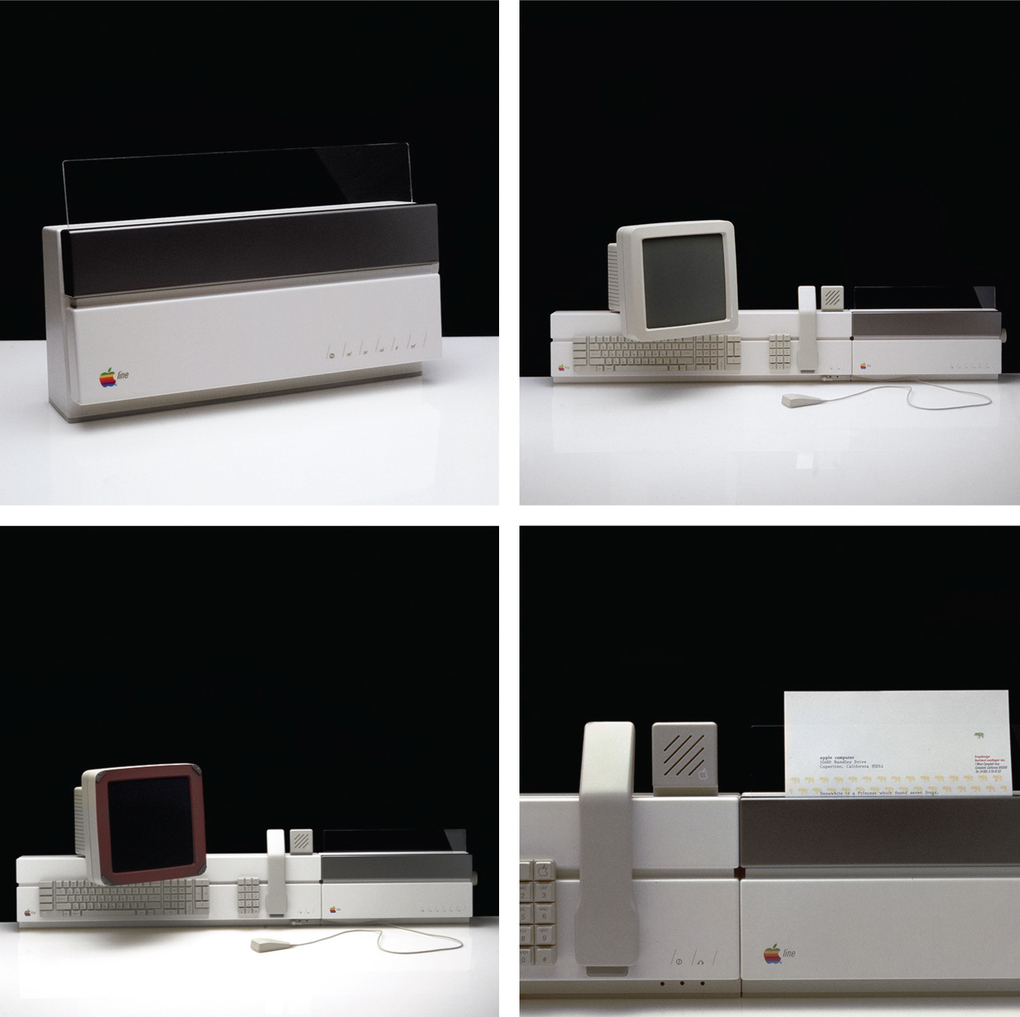
All images reproduced with permission of Arnoldsche Art Publishers.
Related Links:
Wednesday, March 05. 2014
The Mission to Decentralize the Internet | #network #decentralization
Following my previous reblogs about The Real Privacy Problem & Snowdens's Leaks.
Via The New Yorker
-----
Posted by Joshua Kopstein
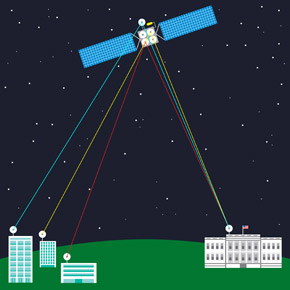
In the nineteen-seventies, the Internet was a small, decentralized collective of computers. The personal-computer revolution that followed built upon that foundation, stoking optimism encapsulated by John Perry Barlow’s 1996 manifesto “A Declaration of the Independence of Cyberspace.” Barlow described a chaotic digital utopia, where “netizens” self-govern and the institutions of old hold no sway. “On behalf of the future, I ask you of the past to leave us alone,” he writes. “You are not welcome among us. You have no sovereignty where we gather.”
This is not the Internet we know today. Nearly two decades later, a staggering percentage of communications flow through a small set of corporations—and thus, under the profound influence of those companies and other institutions. Google, for instance, now comprises twenty-five per cent of all North American Internet traffic; an outage last August caused worldwide traffic to plummet by around forty per cent.
Engineers anticipated this convergence. As early as 1967, one of the key architects of the system for exchanging small packets of data that gave birth to the Internet, Paul Baran, predicted the rise of a centralized “computer utility” that would offer computing much the same way that power companies provide electricity. Today, that model is largely embodied by the information empires of Amazon, Google, and other cloud-computing companies. Like Baran anticipated, they offer us convenience at the expense of privacy.
Internet users now regularly submit to terms-of-service agreements that give companies license to share their personal data with other institutions, from advertisers to governments. In the U.S., the Electronic Communications Privacy Act, a law that predates the Web, allows law enforcement to obtain without a warrant private data that citizens entrust to third parties—including location data passively gathered from cell phones and the contents of e-mails that have either been opened or left unattended for a hundred and eighty days. As Edward Snowden’s leaks have shown, these vast troves of information allow intelligence agencies to focus on just a few key targets in order to monitor large portions of the world’s population.
One of those leaks, reported by the Washington Post in late October (2013), revealed that the National Security Agency secretly wiretapped the connections between data centers owned by Google and Yahoo, allowing the agency to collect users’ data as it flowed across the companies’ networks. Google engineers bristled at the news, and responded by encrypting those connections to prevent future intrusions; Yahoo has said it plans to do so by next year. More recently, Microsoft announced it would do the same, as well as open “transparency centers” that will allow some of its software’s source code to be inspected for hidden back doors. (However, that privilege appears to only extend to “government customers.”) On Monday, eight major tech firms, many of them competitors, united to demand an overhaul of government transparency and surveillance laws.
Still, an air of distrust surrounds the U.S. cloud industry. The N.S.A. collects data through formal arrangements with tech companies; ingests Web traffic as it enters and leaves the U.S.; and deliberately weakens cryptographic standards. A recently revealed document detailing the agency’s strategy specifically notes its mission to “influence the global commercial encryption market through commercial relationships” with companies developing and deploying security products.
One solution, espoused by some programmers, is to make the Internet more like it used to be—less centralized and more distributed. Jacob Cook, a twenty-three-year-old student, is the brains behind ArkOS, a lightweight version of the free Linux operating system. It runs on the credit-card-sized Raspberry Pi, a thirty-five dollar microcomputer adored by teachers and tinkerers. It’s designed so that average users can create personal clouds to store data that they can access anywhere, without relying on a distant data center owned by Dropbox or Amazon. It’s sort of like buying and maintaining your own car to get around, rather than relying on privately owned taxis. Cook’s mission is to “make hosting a server as easy as using a desktop P.C. or a smartphone,” he said.
Like other privacy advocates, Cook’s goal isn’t to end surveillance, but to make it harder to do en masse. “When you couple a secure, self-hosted platform with properly implemented cryptography, you can make N.S.A.-style spying and network intrusion extremely difficult and expensive,” he told me in an e-mail.
Persuading consumers to ditch the convenience of the cloud has never been an easy sell, however. In 2010, a team of young programmers announced Diaspora, a privacy-centric social network, to challenge Facebook’s centralized dominance. A year later, Eben Moglen, a law professor and champion of the Free Software movement, proposed a similar solution called the Freedom Box. The device he envisioned was to be a small computer that plugs into your home network, hosting files, enabling secure communication, and connecting to other boxes when needed. It was considered a call to arms—you alone would control your data.
But, while both projects met their fund-raising goals and drummed up a good deal of hype, neither came to fruition. Diaspora’s team fell into disarray after a disappointing beta launch, personal drama, and the appearance of new competitors such as Google+; apart from some privacy software released last year, Moglen’s Freedom Box has yet to materialize at all.
“There is a bigger problem with why so many of these efforts have failed” to achieve mass adoption, said Brennan Novak, a user-interface designer who works on privacy tools. The challenge, Novak said, is to make decentralized alternatives that are as secure, convenient, and seductive as a Google account. “It’s a tricky thing to pin down,” he told me in an encrypted online chat. “But I believe the problem exists somewhere between the barrier to entry (user-interface design, technical difficulty to set up, and over-all user experience) versus the perceived value of the tool, as seen by Joe Public and Joe Amateur Techie.”
One of Novak’s projects, Mailpile, is a crowd-funded e-mail application with built-in security tools that are normally too onerous for average people to set up and use—namely, Phil Zimmermann’s revolutionary but never widely adopted Pretty Good Privacy. “It’s a hard thing to explain…. A lot of peoples’ eyes glaze over,” he said. Instead, Mailpile is being designed in a way that gives users a sense of their level of privacy, without knowing about encryption keys or other complicated technology. Just as important, the app will allow users to self-host their e-mail accounts on a machine they control, so it can run on platforms like ArkOS.
“There already exist deep and geeky communities in cryptology or self-hosting or free software, but the message is rarely aimed at non-technical people,” said Irina Bolychevsky, an organizer for Redecentralize.org, an advocacy group that provides support for projects that aim to make the Web less centralized.
Several of those projects have been inspired by Bitcoin, the math-based e-money created by the mysterious Satoshi Nakamoto. While the peer-to-peer technology that Bitcoin employs isn’t novel, many engineers consider its implementation an enormous technical achievement. The network’s “nodes”—users running the Bitcoin software on their computers—collectively check the integrity of other nodes to ensure that no one spends the same coins twice. All transactions are published on a shared public ledger, called the “block chain,” and verified by “miners,” users whose powerful computers solve difficult math problems in exchange for freshly minted bitcoins. The system’s elegance has led some to wonder: if money can be decentralized and, to some extent, anonymized, can’t the same model be applied to other things, like e-mail?
Bitmessage is an e-mail replacement proposed last year that has been called the “the Bitcoin of online communication.” Instead of talking to a central mail server, Bitmessage distributes messages across a network of peers running the Bitmessage software. Unlike both Bitcoin and e-mail, Bitmessage “addresses” are cryptographically derived sequences that help encrypt a message’s contents automatically. That means that many parties help store and deliver the message, but only the intended recipient can read it. Another option obscures the sender’s identity; an alternate address sends the message on her behalf, similar to the anonymous “re-mailers” that arose from the cypherpunk movement of the nineteen-nineties.
Another ambitious project, Namecoin, is a P2P system almost identical to Bitcoin. But instead of currency, it functions as a decentralized replacement for the Internet’s Domain Name System. The D.N.S. is the essential “phone book” that translates a Web site’s typed address (www.newyorker.com) to the corresponding computer’s numerical I.P. address (192.168.1.1). The directory is decentralized by design, but it still has central points of authority: domain registrars, which buy and lease Web addresses to site owners, and the U.S.-based Internet Corporation for Assigned Names and Numbers, or I.C.A.N.N., which controls the distribution of domains.
The infrastructure does allow for large-scale takedowns, like in 2010, when the Department of Justice tried to seize ten domains it believed to be hosting child pornography, but accidentally took down eighty-four thousand innocent Web sites in the process. Instead of centralized registrars, Namecoin uses cryptographic tokens similar to bitcoins to authenticate ownership of “.bit” domains. In theory, these domain names can’t be hijacked by criminals or blocked by governments; no one except the owner can surrender them.
Solutions like these follow a path different from Mailpile and ArkOS. Their peer-to-peer architecture holds the potential for greatly improved privacy and security on the Internet. But existing apart from commonly used protocols and standards can also preclude any possibility of widespread adoption. Still, Novak said, the transition to an Internet that relies more extensively on decentralized, P2P technology is “an absolutely essential development,” since it would make many attacks by malicious actors—criminals and intelligence agencies alike—impractical.
Though Snowden has raised the profile of privacy technology, it will be up to engineers and their allies to make that technology viable for the masses. “Decentralization must become a viable alternative,” said Cook, the ArkOS developer, “not just to give options to users that can self-host, but also to put pressure on the political and corporate institutions.”
“Discussions about innovation, resilience, open protocols, data ownership and the numerous surrounding issues,” said Redecentralize’s Bolychevsky, “need to become mainstream if we want the Internet to stay free, democratic, and engaging.”
Illustration by Maximilian Bode.
Wednesday, January 15. 2014
Intel Edison: A Computer in an SD Card | #computing #everyware
Via Make
-----

Intel’s new single board computer, Edison, takes on a familiar form factor. Jammed into an SD card, the 400MHz Quark processor on board has two cores, flash memory, and includes Wi-Fi and Bluetooth Low Energy for communication. It runs Linux on one core and a real time operating system on the other. You can program Edison by inserting the board into the SD card reader of your computer. The pins on the bottom of the board are capable of GPIO, UART, I2C, SPI, and PWM. “It can be designed to work with most any device—not just computers, phones, or tablets, but chairs, coffeemakers, and even coffee cups,” according to Intel’s press release. “The possibilities are endless for entrepreneurs and inventors of all kinds.” At first glance, I think this could be a good board for makers as well.
Check out the video below for more about Intel’s newest dev board including some test implementations from Thomas Lipoma, the founder of Rest Devices, the makers of the Mimo baby monitor.
Monday, December 09. 2013
Cuttable, Foldable Sensors Can Add Multi-Touch To Any Device | #sensors #make
Via TechCrunch (via Computed·By)
-----
Researchers at the MIT Media Lab and the Max Planck Institutes have created a foldable, cuttable multi-touch sensor that works no matter how you cut it, allowing multi-touch input on nearly any surface.
In traditional sensors the connectors are laid out in a grid and when one part of the grid is damaged you lose sensitivity in a wide swathe of other sensors. This system lays the sensors out like a star which means that cut parts of the sensor only effect other parts down the line. For example, you cut the corners off of a square and still get the sensor to work or even cut all the way down to the main, central connector array and, as long as there are still sensors on the surface, it will pick up input.
The team that created it, Simon Olberding, Nan-Wei Gong, John Tiab, Joseph A. Paradiso, and Jürgen Steimle, write:
This very direct manipulation allows the end-user to easily make real-world objects and surfaces touch interactive,
to augment physical prototypes and to enhance paper craft. We contribute a set of technical principles for the design of printable circuitry that makes the sensor more robust against cuts, damages and removed areas. This includes
novel physical topologies and printed forward error correction.
You can read the research paper here but this looks to be very useful in the DIY hacker space as well as for flexible, wearable projects that require some sort of multi-touch input. While I can’t imagine we need shirts made of this stuff, I could see a sleeve with lots of inputs or, say, a watch with a multi-touch band.
Don’t expect this to hit the next iWatch any time soon – it’s still very much in prototype stages but definitely looks quite cool.
Thursday, October 24. 2013
Shapeoko 2 $650 Milling Machine Launches | #print
Via Make

Shapeoko was the little milling machine that could. It surpassed its Kickstarter goal and went into production with the goal of supplying CNC mill fans with an easy-to-use and inexpensive ($300) CNC machine.
Two years after the Kickstarter campaign concluded, creator Edward Ford has joined forces with Inventables to build the Shapeoko 2, which goes on pre-sale today. The second version features a completely redesigned Z-axis, dual Y-axis steppers, as well as Inventables’ MakerSlide linear bearing system.
If you’ll be in Chicago on today (note: last monday), Inventables will be holding a Shapeoko 2 launch event where you’ll get the opportunity to see the machine in action. You can also pre-order the kit. The price is $300 for just the mechanics — just add electronics — or you can get a full kit for $650.
Wednesday, October 16. 2013
arkOS: Building the anti-cloud (on a Raspberry Pi)
Via TechWorld
-----
By Rohan Pearce
arkOS is an open source project designed to let its users take control of their personal data and make running a home server as easy as using a PC

At the start of this year, analyst firm Gartner predicted that over the next four years a total of US$677 billion would be spent on cloud services. The growth of 'things-as-a-service' is upending enterprise IT and creating entirely new, innovative business models. At the same time, social networks such as Facebook and Twitter have built massive user bases, and created databases that are home to enormous amounts of information about account holders.
Collectively, all of this means that people's data, and the services they use with it, are more likely than ever to be found outside of home PCs and other personal devices, housed in servers that they will probably never likely to see let alone touch. But, when everything is delivered as a service, people's control and even ownership of their data gets hazy to say the least.
Earlier this year NSA whistle-blower Edward Snowden offered some insight – in revelations that probably surprised few but still outraged many – into the massive level of data collection and analysis carried out by state actors.
arkOS is not a solution to the surveillance state, but it does offer an alternative to those who would rather exercise some measure of control over their data and, at the very least, not lock away their information in online services where its retrieval and use is at the whim of a corporation, not the user.
arkOS is a Linux-based operating system currently in alpha created by Jacob Cook and the CitizenWeb Project. It's designed to run on a Raspberry Pi – a super-low-cost single board computer – and ultimately will let users, even of the non-technical variety, run from within their homes email, social networking, storage and other services that are increasingly getting shunted out into the cloud.
CitizenWeb Project
Cook is the founder of the CitizenWeb Project, whose goal is to promote a more decentralised and democratic Internet
"It does this by encouraging developers that work on tools to these ends, offering an 'umbrella' to aid with management and publicity for these projects," Cook says
"Decentralisation rarely gets any attention, even within the tech community, and it was even more obscure before the NSA scandal broke a few months ago," he adds.
Atlassian taps crowdsourcing, open source for charity
Building the tools to build the Internet of Things
Indie developers take TownCraft to world stage
The best way to promote decentralisation "is to provide great platforms with great experiences that can compete with those larger providers," Cook says
"This may seem like an impossible task for the open source development community, especially without the head start that the platforms have, but I believe it is entirely doable.
"We produce the best tools in the world – far better than any proprietary solutions can give – but there is a huge gap with these tools that the majority of the population cannot cross.
"When we tell them, 'oh, using this tool is as easy as installing a Python module on your computer,' for us geeks that is incredibly easy, but for most people, you lost them at the word Python and you will never get them back.
"So the momentum toward using centralised platforms will not relent until developers start making tools for a wider audience. Experience and usability is every bit as important as features or functionality."
arkOS is the CitizenWeb Project's first major initiative but more are on the way. "There are quite a few planned that have nothing to do with arkOS," Cook says.
"I've been working on arkOS since about February of this year, which was a few months before the [NSA] revelations," Cook says.
The birth of arkOS
There were two things that spurred work on arkOS
"The first was my decision to set up my own home server to host all of my data a few years ago," Cook explains.
"I had a good deal of experience with Linux and system administration, but it still took a huge amount of time and research to get the services I wanted set up, and secured properly.
"This experience made me realise, if I have background in these things and it takes me so long to do it, it must be impossible for individuals who don't have the expertise and the time that I do to work things out."
The second was the push by corporations "to own every aspect of one's online life."
"Regardless of your personal feelings about Google, Facebook, etc., there have been countless examples of these services closing themselves off from each other, creating those 'walled gardens' that give them supreme control over your data," Cook says.
"This might not bother people, until we find out what we did from Snowden, that this data doesn't always rest with them and that as long as there is a single point of failure, you always have to rely on 'trusting' your provider.
"I don't know about you, but I wouldn't trust a company that is tasked to sell me things to act in my best interest."
"All that being said, the NSA revelations have really provided a great deal of interest to the project. In all of the networks and communities that I have been through since the scandal broke, people are clamouring for an easy way to self-host things at home. It shouldn't have to be rocket science. I hope that arkOS can represent part of the solution for them."
The aim of the project is an easy-to-use server operating system than can let people self-host their own services with the ease that someone might install a regular desktop application
"Hosting one's own websites, email, cloud data, etc. from home can be a very time-consuming and occasionally expensive endeavour," Cook says.
"Not to mention the fact that it takes a good amount of knowledge and practice to do properly and securely. arkOS lets you set up these systems just like you do on your home computer or your smartphone, when you install something from an app store. It 'just works' with minimal configuration.
"There is no good reason why server software shouldn't be able to have the same experience."
Making servers simple
The OS is "all about simplicity" straight out of the box, Cook says.
"For example, on the Raspberry Pi, hosting server software that routinely writes to log files can quickly wear out your SD card. So arkOS caches them in memory to make as few writes as possible, and it does this from its first boot."
The team is building a range of tools that make it easy to manage an arkOS server. These include Beacon, which lets users find other arkOS servers on a local network, and Genesis, a GUI management system for arkOS.
Genesis is the "most important part" of the OS, Cook says. "It's the tool that does all the heavy lifting for you – installing new apps and software with one click, automatically configuring security settings, giving wizards for navigating through lengthy setup [processes].
"The goal with Genesis is to allow you to do anything you want with your server in an easy and straightforward way, without even having to think about touching the command line. It runs locally on the arkOS server, accessible through the browser of your home computer."
There are more tools for arkOS on the way, Cook says.
"Any one of these tools can be made to work with other distros; the key is that they are available in the default working environment with no additional setup or bother on the user's part."
At the moment the system is still very much in alpha. "It is minimally stable and still getting most of its major features piled in," Cook says. Despite it being early days the reception so far has been "very positive".
"It's been downloaded several hundred times, ostensibly by intrepid people willing to try out the framework and see if they can produce bugs," he says.
At the moment, Cook is leading the arkOS project and also doing the bulk of the development work on Genesis.
"Aside from myself, there are other individuals who contribute features when they are able, like working on Deluge or putting together plugins to use with Genesis," he says.
He is interested in finding more people to help out with the components of arkOS, particularly with Python and Golang experience, which are being used extensively. He's also interested in sysadmins or Linux veterans to help manage repositories, with an to expanding the operating system to other architectures.
"Web design is also a big one, both for the Genesis front-end as well as our Web properties and outreach efforts. Even non-tech people can lend a hand with outreach, community support and the like. No offer of help will be refused so people can be in touch confidently," he adds.
Looking beyond alpha
arkOS is under active development but the OS is still at a "very experimental" stage. Most of Cook's time is spent working on frameworks for Genesis, with a goal of completing its major frameworks by the end of this year and releasing a beta of arkOS.
A major sub-project the team working on is called Deluge: A dynamic DNS service and port proxy for users who don't have access to their own domain name or static IPs.
"This would make putting your services online truly simple and hassle-free," Cook says.
"I am working on the security framework right now, allowing users to easily segment their services based on the zone that they should be available to. For example, you can set your ownCloud site that you run with arkOS to only be available on your home network, while your Jeykll blog should be available to everyone.
"Then comes the certificates system, easily making SSL certs available to your different applications."
"Beyond that, most of what I will be working on is plugins that do certain things. Email is a really big thing, something that nearly everyone who asks about arkOS is interested in self-hosting. With the NSA revelations it isn't hard to see why."
Other features to be included in arkOS include XMPP chat server hosting, Radicale (calendar/contacts hosting), automatic backups, internationalisation, Tor integration, "and much, much more."
Contact Rohan Pearce at rohan_pearce at idg.com.au or follow him on Twitter: @rohan_p
Related Links:
fabric | rblg
This blog is the survey website of fabric | ch - studio for architecture, interaction and research.
We curate and reblog articles, researches, writings, exhibitions and projects that we notice and find interesting during our everyday practice and readings.
Most articles concern the intertwined fields of architecture, territory, art, interaction design, thinking and science. From time to time, we also publish documentation about our own work and research, immersed among these related resources and inspirations.
This website is used by fabric | ch as archive, references and resources. It is shared with all those interested in the same topics as we are, in the hope that they will also find valuable references and content in it.
Quicksearch
Categories
Calendar
|
|
July '25 | |||||
| Mon | Tue | Wed | Thu | Fri | Sat | Sun |
| 1 | 2 | 3 | 4 | 5 | 6 | |
| 7 | 8 | 9 | 10 | 11 | 12 | 13 |
| 14 | 15 | 16 | 17 | 18 | 19 | 20 |
| 21 | 22 | 23 | 24 | 25 | 26 | 27 |
| 28 | 29 | 30 | 31 | |||


